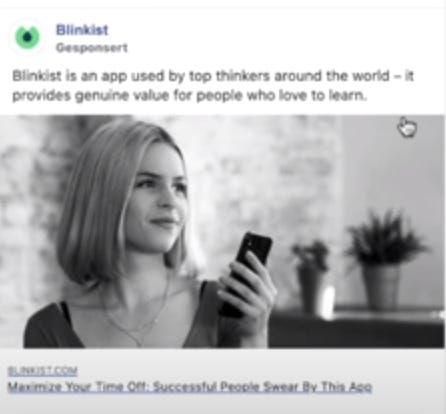Hi there,
Meta ads in 2025 feel like a video game: the rules keep changing, there’s more competition than ever, and everyone swears their way is the best.
To make sense of what’s actually working in 2025, I sat down with Marcus Burke to interview him for RevenueCat.
With over 13 years of experience scaling paid social for brands like Blinkist and Tandem, Marcus has seen every Meta evolution up close. His insights are sharp, practical, and refreshingly BS-free.
The original interview focused on subscription apps, but I wanted to highlight five trends every D2C founder and Head of Growth should know.
Let’s dive in:
1. Classic UGC is dying (finally)
You know the format: a stranger looking into the camera, explaining why they love your product. It’s been rinsed to death. What’s working now?
Text wall ads are basically long-form copy with minimal visuals. They break all the rules yet feel native and organic.
Infographics: Bite-sized value in-feed. Think before/after comparisons, benefits, or habit trackers.
Faceless AI content: B-roll + AI voiceover = content that’s cheaper, easier, and still converts.
It’s all about authenticity without polish.
2. AI is changing how we build creatives
AI tools aren’t just for fun experiments anymore. They’re becoming part of the creative workflow for smart brands.
Whether it’s using Runway AI to animate static images, Midjourney AI to create thumb-stopping visuals, or Luma Dream Machine to spin text into video—Marcus (the expert I interviewed) sees a real edge for brands who start playing with these tools now.
There’s also a shift in skillsets. 2024 was the rise of the prompt engineer.
2025? It might be the rise of the prompt creative.
3. Creative quality beats creative quantity
With the rise of AI and improved tracking, there’s a temptation to go back to mass-testing tons of creative variants. But that only works if your base creatives are solid.
The key takeaway: high volumes don’t help if the concept itself doesn’t resonate. Don’t just test small iterations—go bigger on format and concept shifts.
4. Match your placement with your audience
Everyone loves low CPMs. But Marcus reminded me that what really matters is context—are your best ads being shown to the right audience in the right place?
Reels might be cheap, but often bring low-intent scrollers or skew to a younger audience.
Marcus shared a great story from his time at Blinkist. They found that their older, higher-LTV users were coming from Facebook Feed—not Reels. So they built a second ad account just for Web Conversion, ran native-looking ads that resembled articles, and redirected to soft-sell landing pages.
Once you know which placements bring the right people, tailor your creative to those spots.
5. Threads ads are probably coming (and might be worth testing)
Meta is rolling out ads on Threads. It’s text-driven, more conversational, and may be the perfect playground for brands with a voice.
Especially if you’re already testing long-form or story-based creatives.
Recommendation
Every week, I recommend a relevant resource to learn more about the topic.
Firstly, definitely follow Marcus Burke on Linkedin. He regularly shares great insights on Meta ad funnels for apps.
Secondly, if you want to see the full article, focused on subscription apps but full of smart, creative, targeting, and budget scaling insights, you can check it out here.
I’ve been writing a lot for RevenueCat recently, so if you’re in the app space, definitely check out some of the other articles I’ve recently written for them.
It feels like Meta is changing faster than ever for the good and the bad. I loved Marcus's approach of not following quick hacks but understanding the bigger picture and how the platform works to use it to your advantage.
Till next week,
Daphne









The creative quality is greater than quantity part is so true. It doesn’t matter if you can spin up 10x more ads with AI if the base creatives and messaging aren’t aligned with your target personas. Thanks for sharing!